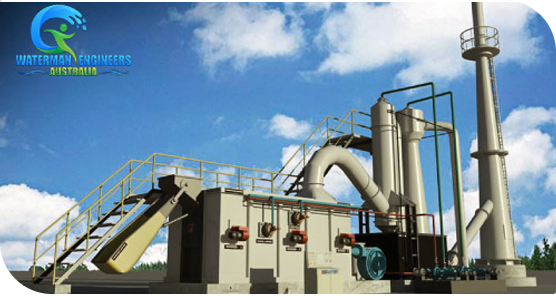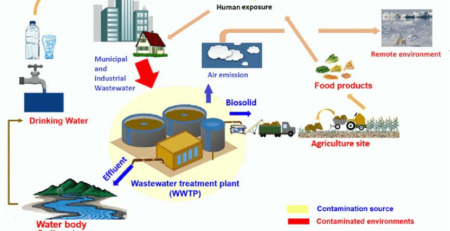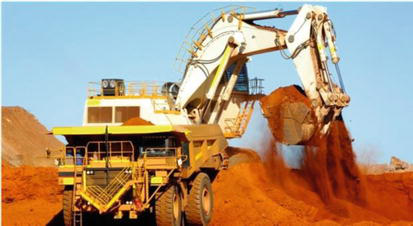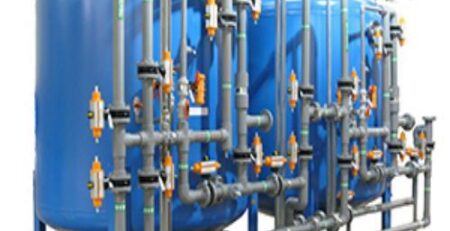Waste Management – Strategies, Importance & Incineration for Municipal Corporations, Cities, and Town
Introduction:
The ever-increasing quantity of waste humans generate is one of the most crucial issues the world faces today. Waste puts public health at risk, pollutes the environment, and its disposal costs cities and countries a fortune they often cannot afford. Our global population of 7.9 billion people already struggles to deal with the 2.1 billion tons of municipal solid waste generated. More than half of the earth’s population has no waste collection at all. Countries that do have waste collection cannot keep up with the challenges presented by a growing number of people living in cities, and the new streams of hazardous waste resulting from industrialization. Becoming a more resource-efficient society is so important globally that countries have formally pledged their commitment through the Paris agreement on climate change and the UN Sustainable Development Goals. There are many positive actions countries and cities can take to improve waste management beyond collection and disposal and there is a need for sustainable waste management for towns, cities, and municipalities.
In most developing countries and their cities, towns, and municipalities waste management is limited to waste collection and disposal. The aim is to gather as much waste as possible to keep cities and towns clean. However, these countries and cities never have enough ability and infrastructure to deal with the growing amounts of waste. Even when collection keeps up with the growing amount of waste, we are just transferring the problem from the street to landfill sites or some other location.
Due to rapid population growth, there are different impacts seen on the planet. A lot of waste is generated by production and consumption and most of the waste is not reused and recycled. In fact, in Europe, about 1.69kg of waste is generated by everyone in a day, which is almost 620 kg per year. Most of the waste originates from packaging and containers of products.
Waste Characterization:
Waste characterization includes collection, sorting, categorizing waste, and disposal. Waste is of several types such as municipal waste that includes household and commercial waste, electronic waste, and radioactive waste.
Waste is classified in several forms:
- Consumer products that come from a particular use of the product by the consumer in daily life such as paper, food waste, plastic, packaging, and containers.
- Durable goods include objects which last for a longer duration such as furniture, electrical appliances, and equipment. These materials are disposed of separately.
- Construction, renovation, and demolition waste originate from building houses or any project.
- Hazardous waste includes hazardous materials such as batteries, paints, solvents, fluorescent bulbs, refrigerators, oil, propane cylinder, solvents, cleaning agents, and chemicals.
Waste characterization helps in finding proper strategies for recycling, reducing waste, composting, and waste to energy plans to achieve sustainable waste management for towns, cities, and municipalities. This can find gaps in management. Properties at generation source and disposal can change because of poor management practices.
Strategies for Waste Management:
The city waste management strategy identifies six goals:
- Step up the waste collection and 3Rs activities
- Halt open waste burning and disposal
- Proper management of industrial and other waste
- Appropriate Supervision of fluid waste
- Awareness-raising and capacity building
- Regular monitoring.
Various strategies are used to lessen the generation of waste. Waste minimization includes different strategies for the design of products that can reduce the quantity of waste and reduce waste toxicity. By reusing the materials and by shifting elements of processing and design the waste can be lessened.
Importance of Sustainable Waste Management:
Sustainable waste management is significant for many purposes. Some of them are:
- It creates space as landfill uses a lot of space so there is a need to make the best use of waste either reuse or recycle where possible.
- It saves wealth as recycling decreases the disposal expense.
- It limits pollution. Waste produces harmful effects upon dumping but by sustainable waste management, people know how to deal with waste, and results in fewer impacts.
- It helps us become responsible citizens of the planet by effectively and sustainably managing waste, having better ways of managing waste, innovative technologies of dealing with waste, and the best alternatives for each waste.
Waste Management Hierarchy:
The waste management hierarchy is a system that involves different steps to help in the sustainable management of waste in municipal corporations, towns, and cities.
The waste management hierarchy incorporates five phases.
1- Prevention:
In the waste management hierarchy, waste prevention, and reduction of the source is the top priority which can be achieved by increasing efficiency and reducing the use of materials and products.
Pollution prevention is source reduction and resource conservation. The concentrated products weigh less, their volume is less, and fewer resources are used in manufacturing. Soya bean and organic inks should utilize in newspapers and magazine printers. This can diminish the use of metals. It includes reducing waste.
- Reduce:
To achieve sustainable waste management, avoid unnecessary materials and products, and use less packaging. Lower the usage of paper and move to digital and cloud storage. Only print when it is necessary and print on both sides of the paper. Also, switch to hand dryers to reduce the use of paper towels.
2- Reuse:
It is better to reuse products rather than recycle. Reusing the products helps in conserving the environment and minimizes the use of many products. Many parts of vehicles can be reused. When one replaces the clutch or brake in the car the new part is probably made from a discarded one. This can save energy and labour rather than making a newer one. For sustainable waste management, reuse is a vital component. By reusing the products, the life span increases and the waste quantity of the product decreases. Instead of throwing products into the trash donate them to needy people. For example, hotels and restaurants should give their extra food to shelter houses and needy people. Give away the old computers, electronics, and old furniture to poor people. This can help in the sustainable management of waste.
3- Recycling:
Recycling is the recovery of used materials from waste to form new products. By recycling the products, the need for raw material and natural resource exploitation is reduced. Recycling helps in recovering and using waste materials into valuable materials. Recycling directly reduces energy needs, emissions, and conserves natural resources. Recycling also aids in economic profit including job opportunities for many people.
To recycle metal components, the metal is melted first, purified, and manufactured into a new product. This requires energy, labour, and generates pollution to some extent. But if we reuse the component, it reduces inputs and pollution. The commonly recycled materials include paper, glass, plastic, aluminium, wood, and steel. Green plant waste can be recovered and reused as fertilizer. Food oils are recovered and used in biodiesel. Nowadays, clothes are recycled by selling them at a yard sale or by donating. Old clothes are often exported to less developing countries. Those clothes that cannot be reused are processed into rags or used to make roof shingles.
Recycling success depends upon good collection and recycling of recyclable materials. Recycling is done for sustainable waste management as recycling the materials enhances the material and product efficiency and reduces the amount of waste to be dumped and this can also reduce the harmful effects on the environment.
4- Energy Recovery:
In energy recovery, waste is converted to usable heat or fuel like biogas. This is done by different processes such as gasification, anaerobic digestion, incineration, and landfill gas recovery. Energy recovery of non-hazardous waste is performed by combustion as it reduces the volume of waste and produces energy by burning.
5- Treatment and Disposal:
Treatment or disposal is the last step in the waste management hierarchy in which the waste is treated by landfill or incineration.
Sanitary Landfill:
A Sanitary landfill is for minimizing water infiltration. Large facilities generate enormous amounts of leachate. The landfill has little oxygen, and microorganisms degrade organic materials. Anaerobes produce methane gas which must be managed to prevent explosions. However, methane is a fuel, and many landfills collect it and use it as fuel for their daily purposes.
Incineration:
Incineration is a method that is used to manage waste and produce energy. The hot temperature is utilized for this method. The by-product of this procedure is ash. This method helps to mitigate hazardous waste like pesticides, hydrocarbons, solvents, oils, and medical waste. Incineration converts waste by fire. By combustion of waste, heat and electricity are generated. Most of the ash from the incineration process is disposed of in the landfill. Landfill leachates are captured and treated but can also contaminate groundwater. For dealing with this concern, metals are removed before burning in waste. Ferrous materials are valuable and recovered. Lead-acid battery burning is prohibited in many countries to avoid pollution and impacts. The incinerator Systems are regulated in developed countries.
Integrated Waste Management:
Integrated waste management is the prevention of waste, composting, recycling, and disposal. In integrated waste management, the evaluation of the area and needs of a community is done. The activities performed for integrated waste management are prevention, recycling, controlled combustion, composting of organic waste, and disposal in a proper landfill site.
Sustainable Waste Management:
Sustainable waste management aims to reduce the consumption of natural resources, reuse products, and produce minimal waste. Waste collection is not only done by municipal corporations, but individuals should also take part in the collection. Household waste is collected mostly by garbage trucks and after that, the waste is sorted. It is important to know the amount and type of waste generated and the sustainable solutions to manage the waste. Educating the people is crucial in achieving sustainability and this can be done through seminars, pamphlets, posters, videos, and articles.
Sustainable waste management helps in utilizing the material for a longer period and reduces the quantity of solid waste that is disposed of in the landfill and by incineration. Sustainable waste management includes the collection, transportation, and disposal of diverse kinds of waste in such a manner that does not imperil the environment, human health, and future generations.
There are many methods used for sustainable waste management including plasma arc gasification, biodegradation, composting, and anaerobic digestion.
Plasma arc Gasification:
Plasma arc gasification is a method used for waste to energy conversion. In this process, carbon-based waste material gasifiers such as sludge, municipal solid waste, and agricultural waste. It generates synthetic gas that can be utilized to form energy by reciprocating gas turbines, boilers, and engine generators. While the non-carbon-based waste material produces reusable metal and vitrified glass.
In plasma gasification, solid waste is pulverized by a crusher and then charged into the furnace of the plasma gasifier using a conveyer belt. Plasma arcs and plasma torches are utilized to make extreme temperatures that break down the waste into elemental form. Only syngas is used to operate the turbine as other gases can corrode the blades of the turbine. Scrubbing is a process that is used to separate toxic gases and eliminate hazardous materials from plasma arc gasification.
Biodegradation of Waste:
A landfill that contains notable organic fractions is discouraged highly in many countries including the United States and European countries. Biological treatment is used to treat waste that contains biodegradable materials while inorganic waste is disposed of.
Biodegradation of waste is performed by different methods such as aerobic composting, and anaerobic digestion. These methods are used when organic fractions are separated from inorganic materials to degrade the waste and make compost. For instance, animal manure, food waste, and yard waste can be converted into compost as they contain naturally degrading bacteria. Anaerobic composting is achieved by taking some organic waste into piles, and vessels in open or closed containers fitted with a collection and treatment of gas system. The bulking materials like wood chips are added to waste to boost the aerobic degradation of organic products. In the end, the material is stabilized and matured in a process where pathogens are destroyed. Carbon dioxide and water are the two end products obtained by composting.
Composting:
Compost is applied for numerous functions. Compost is used as a fertilizer, to remediate the soil and groundwater. Compost quality depends upon proper control of the composting process. Due to inadequate control, the compost can become unsuitable for beneficial applications.
Anaerobic Digestion:
Anaerobic digestion is a process that generates a combination of biogas and biosolids. Biogas is used for heating purposes and electricity production, while biosolids are used as fertilizers and soil amendments. Anaerobic digestion is suitable for wet waste and is used in the collection of biogases. By anaerobic digestion, the waste degrades at a faster rate as in contrast with landfill disposal.
Mechanical biological treatment is a process that is not common but is also used for waste management. In this process the waste is subjected to sorting, shredding, and crushing to reduce the volume of waste.
Life Cycle Assessment:
Life cycle assessment is used to aid decision-makers in the management of waste, and this needs activities to be defined for managing waste.
Capacity building supports the stakeholder with awareness, education, and research to solve the crisis. The institutional framework includes municipal authorities, NGOs (Non-Governmental Organizations), and educational institutes are important. Government should focus on environmentally sustainable landfills, waste reduction practices, polluters pay principle, and finding gap areas. Corporate institutes contribute to reducing, recycling, and advancement of municipal solid waste management. NGOs must be involved in educating, providing awareness, and pollution prevention while improving the quality of waste management.
Product Stewardship:
Product stewardship means the producer takes responsibility for their products. Extended product responsibility provides a major incentive to redesign the products in such a way that can be managed at the product’s end life.
Less packaging in products is used to achieve sustainability. Manufacturers take back the products such as electronic equipment and recycle the products.
Measures for Sustainable Waste Management:
Some measures can be taken to achieve sustainable management of waste, such as:
- Establish a proper system to make waste sorting mandatory and citizen friendly.
- Take organic or bio-waste out of landfills
- Establish effective enforcement and regulatory systems to prevent waste burning, littering, illegal dumping
- Research and application of proper alternative technologies for waste treatment including Waste to Energy
- Encourage waste producers and managers to implement the waste management hierarchy
- Encouraging householders to minimize waste at source and recycle more
- Promote innovative measures such as providing rewards or recognizing efforts to minimize waste and increase recycling rates.
- Explore ways to engage positively with the public about recycling, building on the work of charities and NGOs.
- Ensure that where appropriate farms use biogas as a treatment possibility for managing on-farm waste and recycling nutrients into energy and digestate that can be applied back to the land
- Fasten the collection of recyclable packaging, bottles, and cans.
Sustainable Plans and Policies:
The roadmap (sustainable plan) aims to form a policy framework, including the measure for sustainable waste management and give incentives to support the public.
The goals of the roadmap are:
- To reduce the impacts on the environment, economy, and human
- To reduce waste generation and increase the efficiency of resources
- To strengthen research and learning on sustainable management
- To make efforts in implementing waste management goals.
The polluter pays principle refers to the fact that who generates the waste should bear its cost and manage the impacts of the product.
A sustainable partnership is building a partnership between all stakeholders involving the public, society, and government to take part in waste management practices. Sustainable consumption and production refer to the cycle of producing and utilizing the product to put it in a sustainable way. Policies for waste are made at individual, industrial, institutional, city, national, and global levels. These policies range from aesthetics to fears of health risk.
Plans are made to install bins for each type of waste material including paper, metal, glass, plastic, and organic waste. Different actions should be defined in the plan for sustainable waste management including:
- Strengthening the separate waste collection in cities
- Encourage and develop prevention of waste
- Action to raise awareness of waste, specifically plastic waste
- Upgrading the waste collection
- Increase the proportion of 3Rs (reduce, reuse, and recycle) in household
- Action to prepare bio digestion plant for waste.
Public Participation in Sustainable Waste Management:
If people know about the connection between behavior and environmental impact, they will engage more in protecting the environment. Government should play its role in providing waste awareness to the public. Individuals engage in sustainable waste management through recycling, donations, reuse, and composting. Government policies mostly focus on recycling but there is a need to focus on composting and reducing waste. It is best to promote waste minimization to achieve sustainability.
Policies must be made to provide incentives to the public to reduce waste and make products that can be easily reused and recycled.
In implementing the waste management policy leaders and municipalities are responsible for:
- Evaluating operations to check where waste can be reduced at its generation sources.
- Accumulate items that are durable, have minimal packaging and are recyclable when discarded
- Assessing purchasing, trying to buy products only when needed and in amounts that are not excessive
- Ensuring people have access to compliant waste containers, including recycling containers.
People are responsible for:
- Separating different waste types and putting them in proper waste containers
- Buy environmentally friendly products
The municipality is responsible for:
- Handling movements of solid waste
- Maintaining process of reuse, recycling, composting, and incineration
- Supplying containers for waste recycling to the public
- Supplying containers for the disposal of hazardous, radioactive, biological, wastes.
Conclusion:
The success of sustainable solid waste is based on the concept of 3Rs. Sustainable waste management enables steady development of the present without threatening the future generation. Different strategies are implemented for sustainable waste management for towns, cities, and municipalities through the waste hierarchy. Waste regulation focuses on minimizing waste and introducing cleaner production. Various kinds of waste are still disposed of in an uncontrolled way along with hazardous waste that poses impacts on the environment and human health. There is a great need for sustainable waste management in municipalities, cities, and towns. Among the activities of humans, waste management needs great attention in chasing sustainable development.
The systematic methods for waste disposal are composting, landfill and incineration. These methods do not completely solve the problem of waste management. Plasma arc gasification is one of the advanced methods used for sustainable waste management. It is a closed-loop process that helps in preserving the environment from toxic waste. Waste management firms can motivate the public to participate in initiatives of waste disposal by providing incentives as this can help in boosting the results of sustainable management. There is a need to set goals to reach 70% diversion from waste disposal by 2030 and eliminate the disposal of waste by the year 2050 and minimize food and organic waste with the goal of zero waste.
Waste Management Frequently Asked Questions
1) What are the main types of waste?
Classifying Different Types of Waste
- Recyclable Rubbish.
- Liquid waste. Liquid waste is frequently found both in households as well as in industries
- Organic Waste. Organic waste is a common household waste
- Hazardous Waste.
2) What are the typical waste management systems?
Preventative measures, trash minimization, recycling and reuse, biological treatment, incineration, and landfill disposal make up the long-established hierarchy of waste management (see Figure Hierarchy of Waste Management).
3) What is required for biodegradation process?
The three stages of biodegradation are as follows: bio deterioration, which is the mechanical deterioration of an object’s structure; bio fragmentation, which is the microbial breakdown of components; and assimilation, which is the incorporation of the old material into new cells.
4) What factors affect the rate of biodegradation?
The availability of inorganic nutrients, the presence of numerous substrates, the redox environment, substrate concentration, temperature, water activity, and the microbes’ adaptive response are all known to have an impact on biodegradation rates (7-9).
5) How can you encourage your community to participate in solid waste management?
Taking Community Action for Waste Management
- Coordinate activities with other organizations
- Pursue partnership with government
- Monitor waste activities in your community
- Get involved in education
- Communicate with your government
- Be a watchdog
- Notify the media of stories of environmental importance









